- TOP
- Search Criteria
- Experience a Seasonal Tradition! A Guide to Tori No Ichi in Tokyo
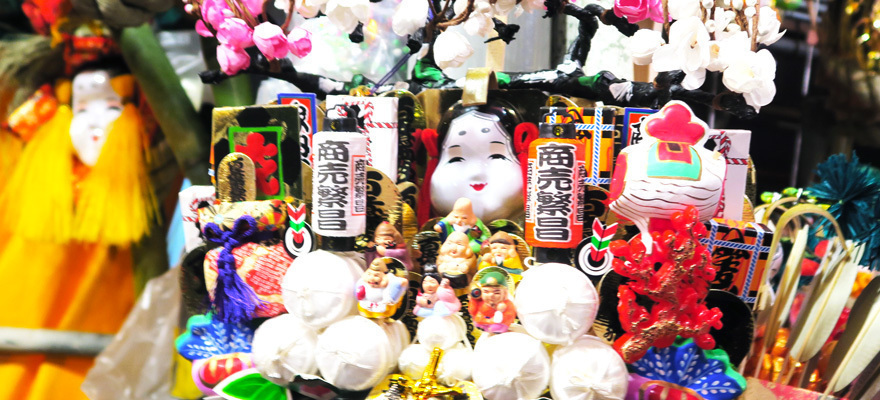
STORY
Experience a Seasonal Tradition! A Guide to Tori No Ichi in Tokyo
Here's a thorough, beginner-friendly guide to help you enjoy Tori no Ichi!
The Origin of Tori No Ichi
The true origins of this event are always a matter of discussion. It is said to have started in Tokyo's Adachi Ward from a harvest festival held by farmers at Otori Shrine in what is now called Hanahata.Tori no Ichi is held every November on the days of the rooster (tori) of the Chinese calendar at Otori shrines in all parts of Japan. This yearly tradition has been going on since the Edo period, about 300 years ago.
Farming utensils used to be sold at this fair. As years went by, sellers started decorating them with lucky charms like koban (the old Japanese coins) and other objects. Nowadays you'll see dozens of stalls selling kumade, a decorated bamboo rake that will help people 'rake in' wealth and good fortune.

Days of the rooster occur every 12 days in November, therefore Tori no Ichi is held at least twice every year, depending on the year.
First time (Ichi no Tori): November 2, 2020
Second time (Ni no Tori): November 14, 2020
Third time (San no Tori): November 26, 2020
Many temples and shires celebrate Tori no Ichi. In Tokyo, the most lively and easily accessible spots are the Otori Shrine and Chokoku-ji Temple in Asakusa, 15 minutes walk from Sensoji Temple, and Hanazono Shrine, 10 minute walk from Shinjuku Station.

Tori No Ichi Is Best Enjoyed at Night!
At Otori Shrine and Chokoku-ji Temple in Asakusa, Tori no Ichi starts at midnight and lasts 24 hours. While the fair goes on for the entire day, the best time to participate is definitely at night, when hundreds of lanterns light up creating a magic atmosphere. The fair opening at midnight is especially popular, with people excitedly waiting in line every year.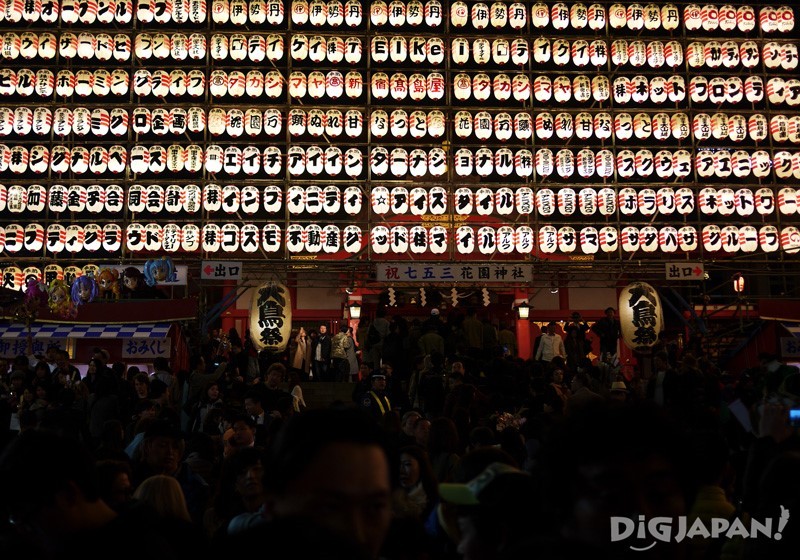
Kumade is the symbol of Tori no Ichi and it's especially popular with business owners. In order to 'rake in' fortune and money, the rake is decorated with symbols of wealth and prosperity like the Seven Lucky Gods, the Japanese 'mallet of fortune' Uchide no Kozuchi, and Japanese sea bream. The bright and golden colors are also calling for economic fortune. If you'd like to buy a kumade we recommend doing so right before you leave, because it can be tricky to walk through the bustling crowd while holding it.

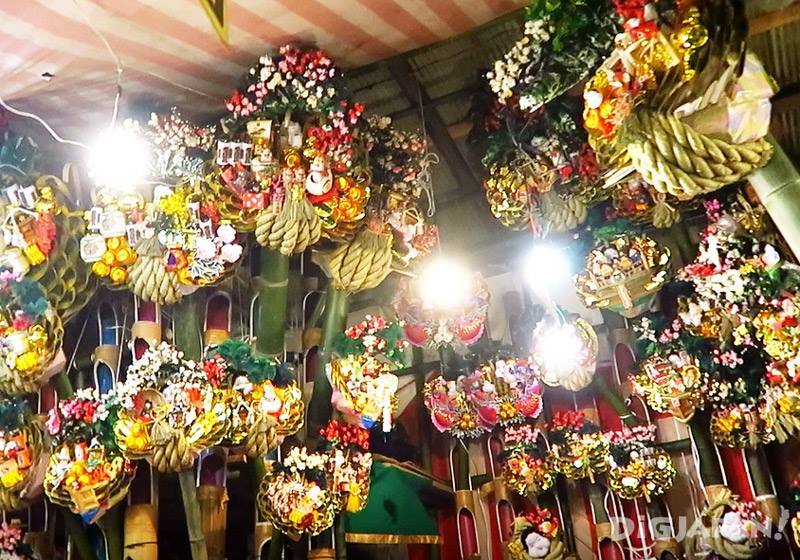
There are so many people! Where do you go first? Well, since the festival is held in the grounds of a temple or shrine, let's start by paying our respect to the gods with a prayer.

After that, you can start wandering around the many yatai food stalls, the staple of every Japanese festival. From meat skewers to octopus balls, everything looks delicious. We recommend you try the Tori no Ichi special kirizansho. It's a traditional New Year mochi sweet made of high-quality non-glutinous rice flour, sugar and Japanese pepper (sansho). The mochi is steamed, beaten in a mortar and cut into thin strips. It has a peculiar sweet taste with a tinge of spiciness. You can usually get a small bag for about 500 yen and a big bag for about 1000 yen. Try an ancient Japanese taste!

Here's How You Buy Kumade!
If you attend Tori no Ichi, you can get a kumade for yourself. They come in sizes that range from the palm of your hand to 2 meters (over 6 feet) and in many different shapes. What's more, there are often no price tags so buying a kumade can be a little overwhelming at first. As a reference, the cheapest kumade start at around 1,000 yen and go up to 10,000-50,000 yen. Sometimes you'll even see special kumade that cost over ten million yen!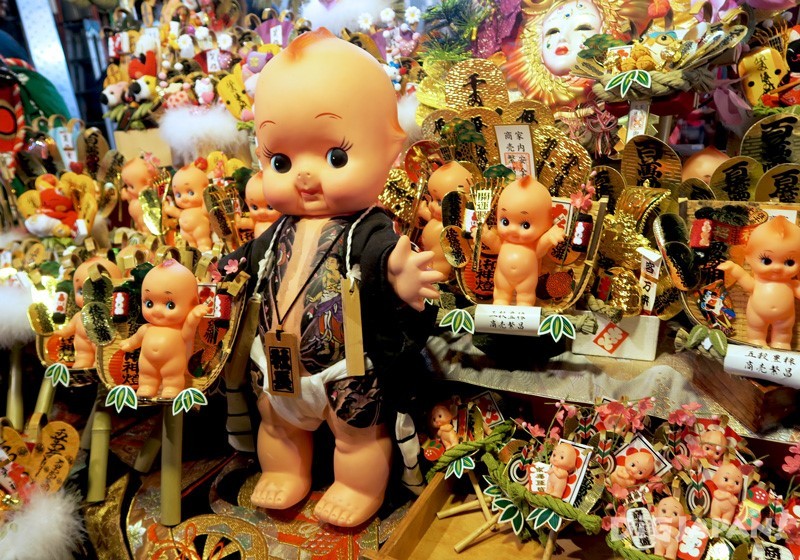
Every year people return their old kumade to the temple or shrine and buy a new one for the year to come. Tradition says that each year you should get a slightly bigger, slightly more expensive rake. The bigger the rake, the more fortune it will bring. That's why it's good to start small and cheap. Choose the style you like and don't be afraid to ask about the price.

One of the distinctive signs of Tori no Ichi is the rhythmic clapping ad cheering that you hear when walking through the kumade stalls. It's a ritual called tejime. Kumade sellers perform it every time someone buys one of their rakes, to seal the deal and ensure the coming of luck and money.
When going home, make sure you hold your kumade high and facing forward. This way you'll call for another year of good luck.
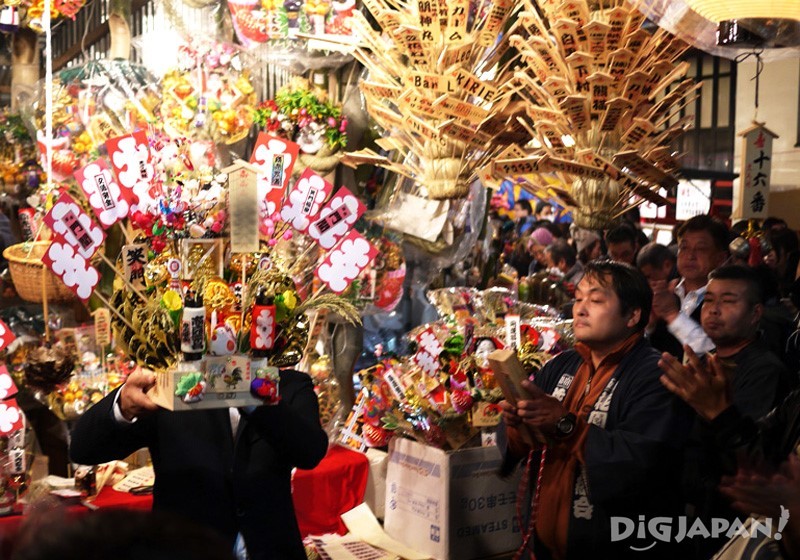
Will you visit one of the three Tori no Ichi festivals this year? It's a great chance to dive into the Japanese culture and bring back a lucky amulet from your trip!
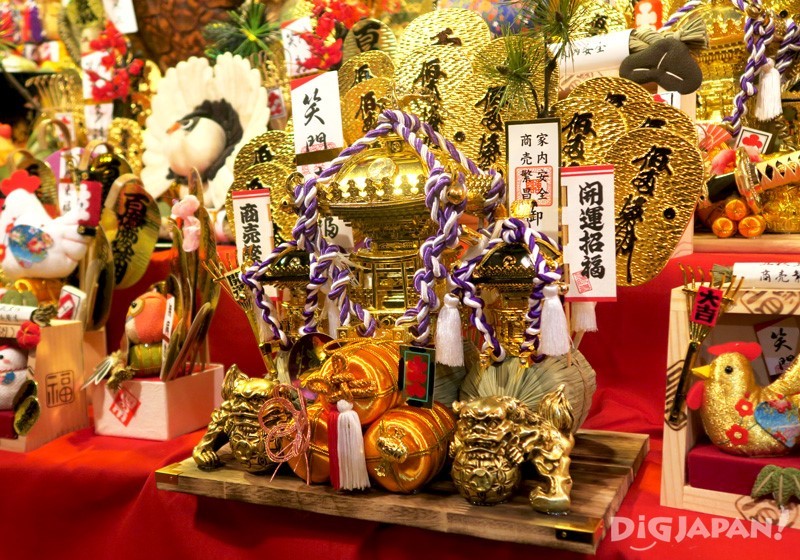
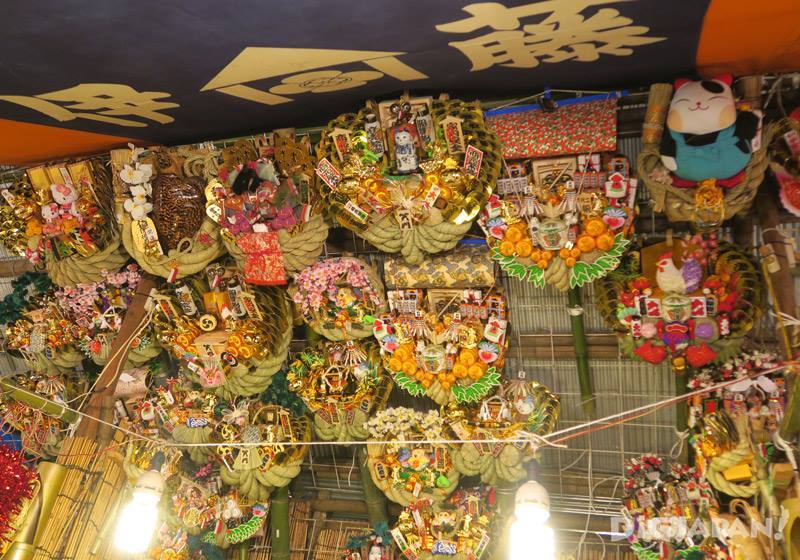
Information
Otori Shrine | 鷲神社
Address: 3-18-7 Senzoku, Taito, Tokyo
Access: 15 min. walk from Tawaramachi Station on the Tokyo Metro Ginza Line, 7 min. walk from Iriya Station on the Tokyo Metro Hibiya Line
Website(Japanese only): http://www.otorisama.or.jp/
Chokoku-ji Temple | 長国寺
Address: 3-19-16 Senzoku, Taito, Tokyo
Access: 10 min. walk from Iriya Station or Minowa Station on the Tokyo Metro Hibiya line
Website(Japanese only): http://otorisama.jp/
Shinjuku Hanazono Shrine | 花園神社
Address: 5-17-3 Shinjuku, Tokyo
Access: 0 min. walk from exit E2 of Shinjuku-sanchome Station on the Tokyo Metro Marunouchi and Fukutoshin lines or the Toei Shinjuku line. 7 min. walk from Shinjuku Station on the JR, Odakyu and Keio lines.
Website(Japanese only): http://www.hanazono-jinja.or.jp/mt/top/
*The above article is based on information from August 2017.
*Information updated in November 2020.
*Event details may change. Please check the latest information on the official websites before your visit.

Liked this story? Like DiGJAPAN!
on Facebook for daily updates!
THIS ARTICLE IS BASED ON INFORMATION FROM 11 01,2017 Author:DiGJAPAN! Editorial Team













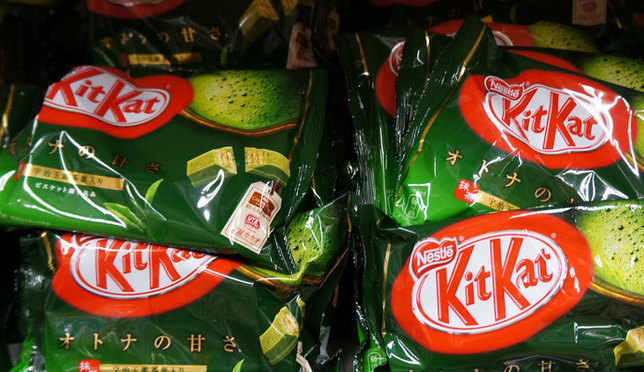
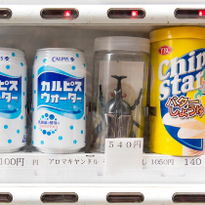

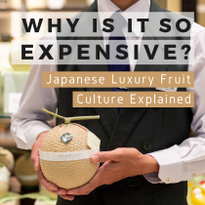





NEW COMMENT | 0 COMMENTS
Open a DiGJAPAN!
account to comment.
Open a DiGJAPAN! Account